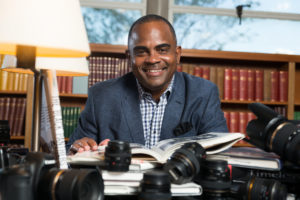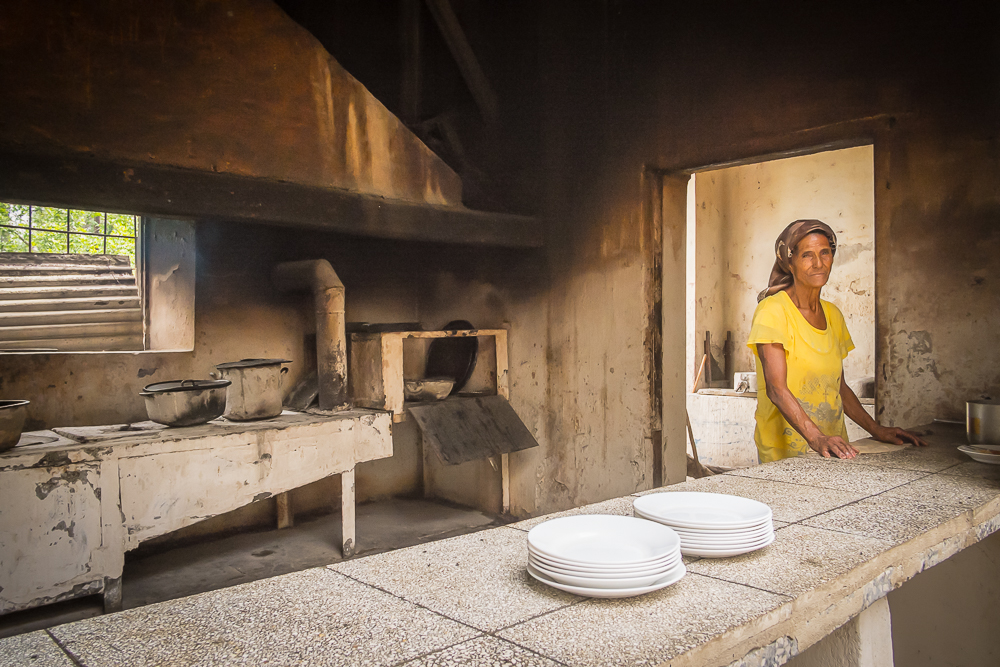
Picturing Your PowerPoint: Reading Images
In 2015 my wife, Dr. Vanessa Watkins, took a trip with National Geographic to Cuba led by one of their photographers. One of the things I love about National Geographic trips is that the tour leader lectures in the hotel prior to going out to engage the culture. This leader lectured, but what blew my mind was that he never put a word on the screen. Throughout our fourteen-day trip, he always lectured with a computer, projector, screen, and images. Still images were his language of choice. He showed us what he was talking about and it was powerful. The images he shared were his images, he was a professional photographer, but that wasn’t what made the images work, it was his pedagogical decision to use the screen to project pictures. He would talk around the image; the image became the center piece of his comments and it worked amazingly well. Those images are still with me, five years later. What does this say to us as pedagogues?

We have the big screen in our classrooms, in Moodle and Canvas, but how are we using this real estate? Are we using the screen to project words, words that we are re-reading to our students? Are we using the templates designed by engineers in Power Point who have no artistic or pedagogical training? Are we using the screen to show our students what we are talking about so that they can see it? I would suggest that we think about how we might use the screen as a pedagogical tool to show the students what we are talking about, to engage the creative centers of their brains, and to embrace the old saying, “a picture is worth a thousand words.” I would rephrase that old saying, “a picture saves us from saying a thousand words.”To use photographs in the powerful way they can be used, we have to understand why a photograph works. Better yet we have to learn to read photographs. Lets go to Cuba:

This is my favorite image from Cuba. Why? This image is rich and full of information. When you read an image, you first read it from left to right. From left to right we see the juxtaposition of the old cars, a new car that is a taxi, a school bus with the backdrop of the capital. Smack dab in the middle of the image behind the newer black car is a street sweeper’s trash can. The image offers clarity, negative space (open space), and the beauty of Cuba’s sky. From the far-left bottom of the frame you see a blue car and that is put in conversation with the far-right of the frame where you see a white car. Sandwiched between these two cars is the complexity of Cuba. The capital stands as a monument under reconstruction; a symbol of Cuba’s determination to live, build, rebuild, reconstruct, and embrace its rich heritage of rugged survival.
You also read an image from front to back. In the foreground we have this old blue car. The car’s headlights shine in the morning rising sun. You can vaguely make out the people in the car. The blue car greets you and it says, “Good morning Cuba!” As you move one layer back to the middle ground of the image, you see the black car, the street sweeper’s garbage can, the woman walking on the side of the school bus, the school bus, the capital, and the beautiful morning sky. The streets are clean and the streets speak of the beautiful blackness that is Cuba. This is an image that could be the opening for a lecture about my trip to Cuba. Why put words on the screen when I can put this picture on the screen? This picture takes you to Cuba. No words needed. This is an image you can talk around as you share with your students the complexity that is Cuba.
When it comes to using images in our classes we need to use powerful images that tell stories and read well from left to right and from front to back. You are looking for images that speak to what you want to say, and say it in a way that brings to life the argument you are making. You have to ask what does this image say? What’s in the edges of the frame? Where does the eye go and where does it wander? What thousand words does this image say that I don’t need to say? Images speak if we look at them and listen. What are your images saying in your lectures?
Here are some more pictures from my Cuba trip. I present them for your consideration to practice reading images. Start from left to right, then read the image from front to back, look at the edges of the frame and then ask, where does the eye go and what does this image say?




To view all my photos from Cuba: https://www.flickr.com/photos/ralphwatkins47/albums/72157652605129753
Leave a Reply